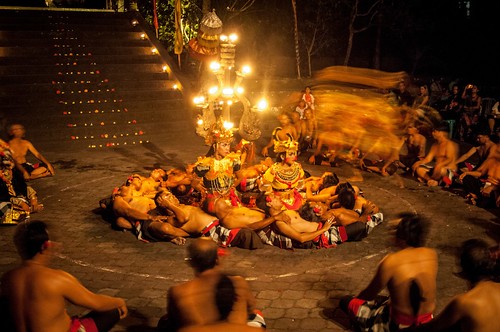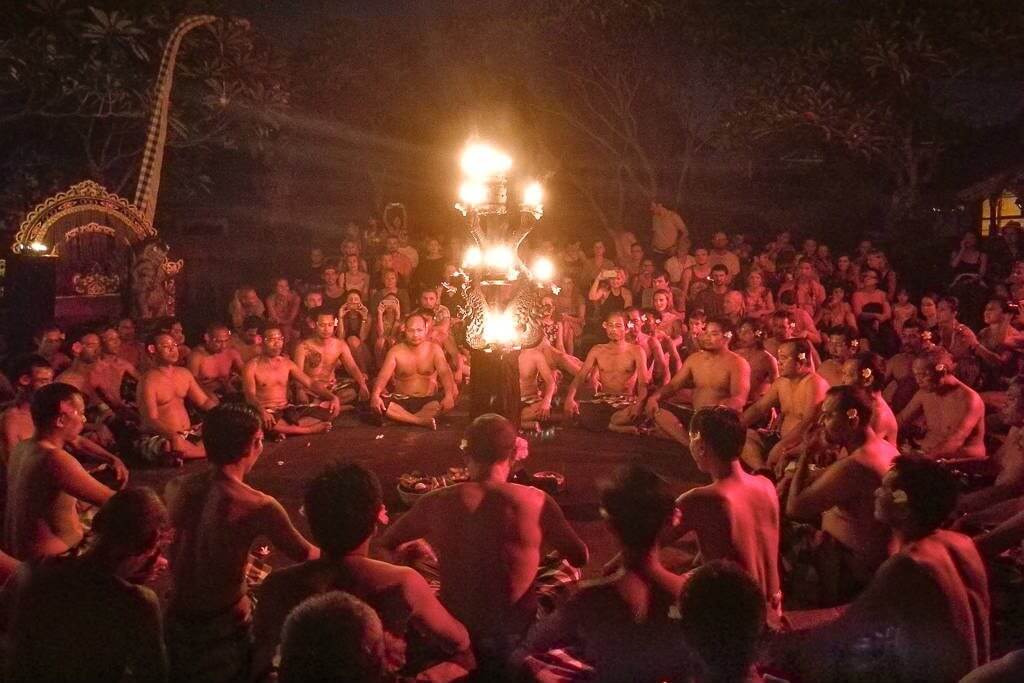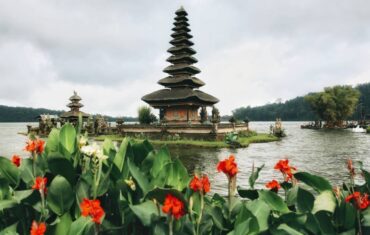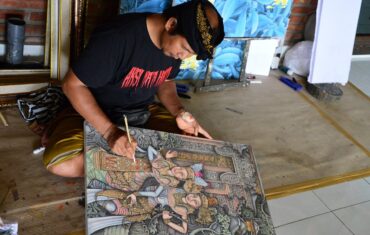Kecak Dance in Bali
The Kecak Dance is Bali’s most iconic and electrifying cultural performance. Often called the “Monkey Chant,” this spectacular, non-stop hour of rhythmic chanting, dramatic fire, and also Hindu epic storytelling is a must-see for any visitor to the Island of the Gods.
For first-time viewers, the experience can be mesmerizing yet confusing. This ultimate guide breaks down the history, meaning, and performance elements to help you fully appreciate this Balinese masterpiece.
What is Kecak Dance?


Generally The Kecak dance is a captivating form of Balinese art that blends elements of an ancient trance ritual with the drama of the Hindu epic, the Ramayana. It’s instantly recognizable by its large, seated, all-male chorus.
What is the meaning of Kecak dance?
Generally The Kecak Dance is a dramatic re-enactment of the Ramayana epic, primarily focusing on the quest of Prince Rama to rescue his wife, Sita, from the demon king Ravana, with the help of the monkey army (Vanara). The dance’s deeper meaning roots itself in the concepts of good versus evil, loyalty, and the triumph of virtue beyond the narrative.
How is the Kecak dance performed?
A circle of approximately 70 to 150 bare-chested men, wearing distinct black and white checkered sarongs, executes the performance. They sit in concentric circles around a central oil lamp or fire pit.
The dance features few actual “dance” movements in the traditional sense. Instead, the chorus sways, leans, and raises their arms rhythmically as a single, living organism, all while continuously chanting. The main characters of the Ramayana such as Rama, Sita, Hanuman, and Ravana enter the circle, moving and acting out the plot.
Who created the Kecak dance?
While the dance draws heavily from the traditional Balinese Sanghyang trance ritual, the modern performance was developed and popularized in the 1930s. A Balinese dancer named Wayan Limbak and a German painter and also musician named Walter Spies collaborated to adapt the ritual, inserting the Ramayana story to make it a structured, accessible performance for a global audience.
What is Kecak music?
The most unique element of Kecak is its music: There are no Gamelan or instrumental musicians. The entire “orchestra” is created by the voices of the male chorus.
The continuous, rapid, and layered shouting of the syllables “Cak!” forms this a cappella rhythm. Cak! Cak!” (or cha-chuck). The voices rise and fall, creating a powerful, dynamic sonic texture that acts as the rhythm, melody, and also dramatic underscore for the entire show.
What does the Kecak fire show mean?
The Kecak Fire Dance is the climax of the performance, most famously seen at Uluwatu Temple. While it is a thrilling visual spectacle, the fire itself carries deep spiritual and ritual significance.
What is the spiritual meaning of Kecak?
The Kecak Dance is an evolution of the traditional Sanghyang Dedari (Trance Dance) ritual. In the original ritual, dancers would fall into a trance state to communicate with the gods and ancestors, seeking purification and also protection for the community. The rhythmic, hypnotic chanting of the Kecak chorus is designed to induce this communal, high-energy trance. While the modern performance is mostly theatrical, the spiritual energy and trance-like chanting root it firmly in Balinese sacred tradition.
What is the fire ceremony in Bali?
The fire component of the Kecak Dance represents a literal and symbolic element of the Ramayana story.
- In the Story: Ravana and his men capture Hanuman, the White Monkey God, and set his tail ablaze, causing the fire to erupt. Hanuman then uses the flame to burn down Ravana’s city of Lanka.
- In Balinese Culture: Fire (Agni) is a sacred, purifying element. The fire ritual at the end, where the hero often walks through the flames, symbolizes the purification of the spirit and also the ultimate triumph of good (Dharma) over evil (Adharma).
What is the story in the Kecak dance?
The story follows the classic tale of the Ramayana, focusing on the following key acts:
- Sita’s Kidnapping: Prince Rama, Princess Sita, and Rama’s brother Laksmana are exiled to the forest. Ravana, the demon king of Lanka, plots to kidnap Sita.
- The Golden Deer: Ravana sends a golden deer to lure Rama and Laksmana away from Sita. Once she is alone, Ravana, disguised as an old ascetic, abducts her.
- Rama’s Quest & Hanuman: Rama searches for Sita and meets Sugriwa, king of the monkeys. Sugriwa sends his army, led by the brave general Hanuman, to find Sita.
- The Fire Dance: Hanuman discovers Sita in Ravana’s garden and delivers Rama’s ring. He is captured, and when Ravana sets his tail on fire, Hanuman uses the flames to destroy Lanka.
- The Battle: Rama and his army fight the final, epic battle against Ravana, eventually rescuing Sita.
What are the words of the Kecak dance?
Generally the main “words” of the Kecak Dance in Bali are simply the rhythmic syllables “Cak! Cak! Cak!” (and variations like cak-ke-cak-ke). There are no meaningful lyrics in the chanting itself. The story is conveyed entirely through:
- The costumes and distinct movements of the central characters.
- A narrator (or dalang) who stands outside the circle and recites the narrative in Balinese or Sanskrit, often providing summaries for tourists in English before each scene.
What is the story behind Balinese dance?
Balinese classical dances generally link intrinsically to Hindu religious rituals, where performers present them as offerings to the gods rather than mere entertainment. They serve as a physical embodiment of Hindu texts, myths, and moral teachings. Gods, demons, heroes, and also ancestral spirits are the central figures in these stories, actively passing down cultural knowledge and morality through generations.
Why do Balinese dancers get possessed?
The state of trance or possession is a feature of many older, ritualistic Balinese dances (Wali or sacred dances), such as the Sanghyang ritual that inspired Kecak Dance in Bali. Dancers enter a trance state to become mediums for the gods or spirits. In these sacred dances, possession is not a theatrical trick but a genuine spiritual state sought to purify the village and receive blessings. Then the powerful rhythm of the Kecak performance sometimes sends participants and audience members into a state of deep, collective excitement or hypnosis.
What is the description of the unique movements of the Kecak dance?
The core of the Kecak Dance’s unique movement is the collective chorus, which functions as one giant entity, also representing the raw power of the monkey army.
What is unique about the Balinese dance?
Balinese dance sets itself apart with its:
- Lack of Instrumental Music (in Kecak Dance in Bali): Using only human voices as the score.
- Rigid, Angular Postures: Dancers often use sharp, symmetrical poses.
- Dynamic Energy: Moving quickly between intense stillness and frenetic action.
- Emphasis on Eyes and Fingers: Every finger joint and darting eye movement conveys emotion or narrative meaning.
What do the eye movements mean in Balinese dance?
In Balinese dance, dancers’ eyes convey character and emotion, serving as the windows to the soul. Dancers use the name Seledet for the technique.
- Darting Eyes: Quick, sharp movements, especially from side to side, often convey alertness, anger, or urgency (typical of the monkey characters like Hanuman).
- Wide Eyes: Used to show surprise or great power.
- Downward Gaze: Indicates shyness or deep reverence.
What is the musical texture of Kecak?
The musical texture of Kecak Dance in Bali is polyphonic and rhythmic. Multiple, independent voice layers constantly interlock to build the sound, rather than a simple unison chant. Different groups within the chorus chant at varying pitches and tempos, creating a complex, pulsing, and also densely layered soundscape that builds hypnotic intensity throughout the entire performance.
Chat with us on WhatsApp
Additionally please check on our services:








